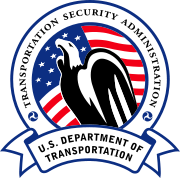With the threat of terror ever present in our lives, the U.S. government has gone to great lengths to ensure security aboard the nation’s airlines. While you may know that some of these new security measures include things like restricting carry-on items and stricter screening, you may not be aware of the TSA’s new pat-down procedure. Here’s what you can expect if you have to go through the new pat-down procedure.
A More Invasive Search
Pat-downs are typically performed when a passenger declines to go through the full-body scanner, or if a TSA agent determines that additional security screening is required. They are also conducted on all flight crew. Unlike the TSA pat-downs of old, which were performed with a cursory feel of the body with the backs of a TSA agent’s hands, the new procedure is much more invasive.
So much so in fact, that major U.S. airports have had to notify local law enforcement of the new procedures to head off passenger complaints of inappropriate touching or groping. The new procedure requires a TSA agent to use the front of the hands, including the fingers, for a more thorough search. For security reasons, not all stages of the new pat-down are public information, so you may experience parts of the procedure not listed here.
Because this new procedure is invasive and can be embarrassing, passengers who must undergo the new pat-down can ask for it to be performed in private. A person of their choice may accompany passengers during the pat-down as a witness.
Why a More Invasive Search is Necessary
The new, more invasive searches are partly in response to A Homeland Security study conducted in 2015. During this study, officials found that the old search procedure failed to find weapons hidden on the body such as handguns and knives.
This failure put the security of everyone at risk and new procedures were adopted to fix this potentially deadly flaw in the system.
If you are selected to undergo a more invasive pat-down, make sure you cooperate with the TSA agent so that you can clear the security checkpoint and board your flight successfully.

